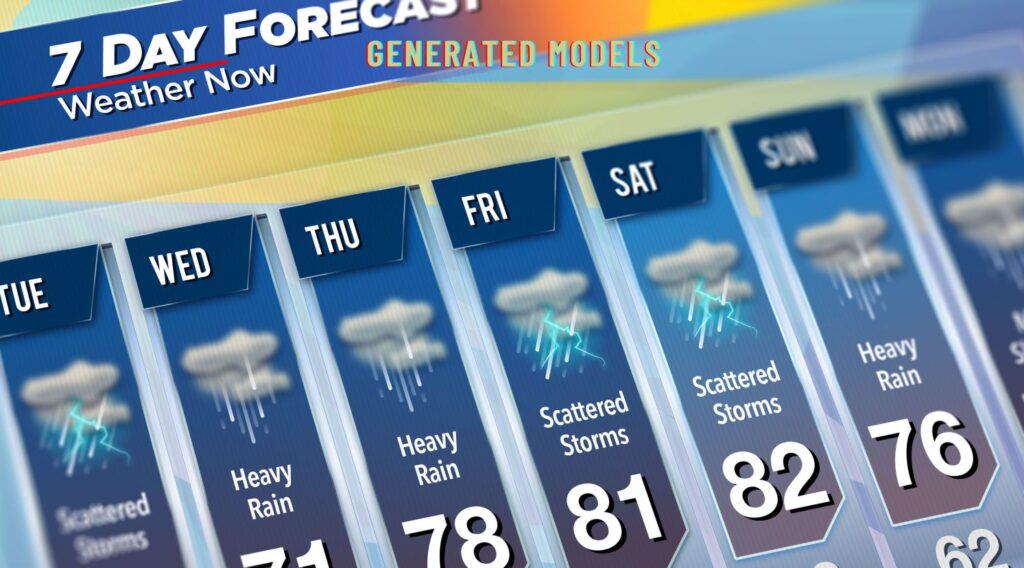Weather Prediction: The science of informatics, and more specifically of machine learning, may give a helping hand in predicting weather conditions. Despite the continuous improvement of weather forecasting institutes, there are only a few times when they make unfortunate predictions. Also, the algorithms used are usually very demanding regarding processing power. This has the consequence that the supercomputers that make the predictions machine learning round-the-clock basis to cope with the demands of forecasting, but also often need more time to finish processing the data, resulting in it being useless when given by the system.
Machine learning, which is considered by many (and not unjustly) to be the fourth industrial revolution after steam, electricity and internet 1.2, is coming to deal with these problems. Past engineering models will be studied in a comprehensive study on weather forecasting; they will be compared with each other, and the advantages and disadvantages of each will be analyzed, while at the same time, combinations of these models will be tested.
Today’s weather forecasting algorithms, while the time it takes to produce a result depends on system power and the complexity of each calculation. In addition, the observation of the not infrequent failure of even the most reliable weather reports raised the question of whether there is a way to improve the accuracy of weather forecasts further.
Algorithms in Meteorological Models
Meteorological models must analyze a multitude of meteorological variables. The variables affect the atmosphere’s lower layer, which we know as the troposphere. Major meteorological phenomena and climatic events occur here. The variables that will be studied are the following: temperature, humidity, cloudiness, wind, solar radiation, and atmospheric pressure, among others. All these variables are constantly changing due to some activities, such as the rotation and translational motion of the earth on the sun.
Once they’ve analyzed the variables, they work with mathematical equations to try to predict more accurately than anyone else how the atmosphere will behave in the coming hours, days, weeks, and even months and years. Those meteorological models that try to estimate the value of variables from months and years are called climate models. This is due to the difference that mainly exists between meteorology and climatology. That is, the time it will take at a given moment. However, climatology studies the evolution of the values of all the atmospheric variables mentioned above over time.
The set of values is what constitutes the climate of an area. If we analyze at the horizontal level, a model can be both global and cover the entire tonicity of the earth, or at the regional level, where it covers only a part of the planet.
An interesting algorithm development with high accuracy and interaction with satellite radars
DeepMind, a subsidiary of Google, the British University of Exeter and the British meteorological service Met Office (with the participation of a Greek diaspora scientist Maria Athanasiadou) developed an “intelligent” forecasting system (precipitation nowcasting system) that can predict with fairly high accuracy whether rain in an area within the next two hours.
Generative models of radar

In this nowcasting algorithm is a conditional generative model that predicts N future radar fields given M past, or contextual, radar fields, using radar-based estimates of surface precipitation XT at a given time point T. Our model includes latent random vectors Z and parameters θ, described by P(XM+1:M+N|X1:M)=∫P(XM+1:M+N|Z,X1:M,θ)P(Z|X1:M)dZ.
The integration of latent variables ensures that the model makes spatially dependent predictions. Learning is framed in the algorithmic framework of a conditional generative adversarial network (GAN)23,24,25, specialized for the precipitation prediction problem. Four consecutive radar observations (the previous 20 min) are used as context for a generator that allows sampling multiple realizations of future precipitation, each realization being 18 frames (90 min).
The system was “trained” with rainfall and radar data from previous years, and its tests have shown it is now 89% accurate in its predictions. More generally, the high rates of traditional mathematical equations with machine learning methods show that it is an acceptable and useful solution for meteorology. In recent years due to climate change with rapid weather changes, with a simultaneous shift in all the factors that affect the formation and forecasting of the weather, it requires the improvement of all involved aspects both at the hardware and digital-algorithmic level.



